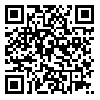BibTeX | RIS | EndNote | Medlars | ProCite | Reference Manager | RefWorks
Send citation to:
URL: http://jhosp.tums.ac.ir/article-1-5513-en.html
Background: Today, intellectual and social capitals as intangible and knowledge-based assets are one of the main factors of organizations’ success. On the other hand, knowledge management is a process which helps organizations engenders wealth from knowledge, intellectual and social capitals. This study aimed to determine the role of intellectual and social capitals in predicting knowledge management.
Materials and Methods: The present research is a descriptive-analytical study carried out in the spring 2015. The target population consisted of all staff of Imam Ali hospital in which selected 155 employees using the quota non-random sampling. The data were collected using three standard questionnaires of Bontis’ intellectual capital (42 items) including human, structural, and relational dimensions, Nahapiet and Goshal’s social capital (17 items) including structural, relational, and cognitive dimensions, and Lawson’ knowledge management (24 items). The data were analyzed using Pearson correlation, employing IBM SPSS version 22 software and structural equation technique of AMOS.
Result: 71% of study participants had bachelor's degree and 40% aged less than 30 years old. The results indicated that the dimensions of social and intellectual capitals were significantly and positively correlated with knowledge management. The results of path analysis revealed the intellectual and social capitals predicted knowledge management with the positive changes 0.79 and 0.89 respectively. As a final point, the structural dimension of intellectual capital and the relational dimension of social capital had the highest direct impact on knowledge management.
Conclusions: Given the important role of intellectual and social capitals in the application of strategies of knowledge management, hospital officials are able to facilitate hospitals increase added value and improve performance and excellence in presenting clinical services by investing more in knowledge-based assets.
Received: 2015/06/12 | Accepted: 2015/11/10 | Published: 2015/12/13
| Rights and permissions | |
 |
This work is licensed under a Creative Commons Attribution-NonCommercial 4.0 International License. |





